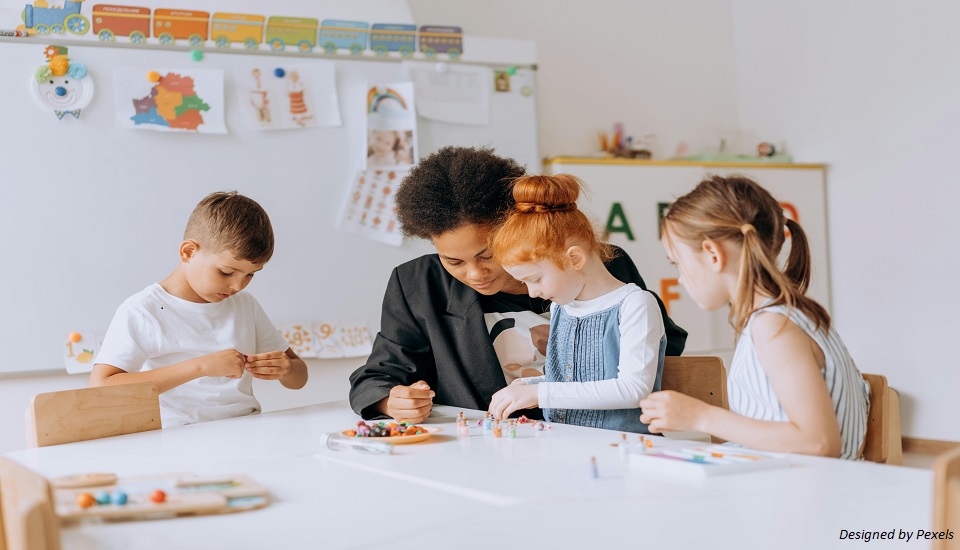In the educational landscape, classrooms are not just learning spaces but vibrant ecosystems where diverse minds and abilities come together. The goal is to create an environment where every student, regardless of their unique learning style or background, can thrive.
Diversity in learning styles means recognizing that students engage with material in different ways. Some are visual learners, while others may be more hands-on. Auditory learners may excel through listening, while kinesthetic learners benefit from movement and touch. Additionally, embracing classroom diversity involves dismantling social and economic barriers to ensure every child feels valued and included.
Those teachers who have pursued courses like Master of Arts in Education with Leadership and Administration knows by integrating strategies to accommodate various needs and nurturing a supportive, inclusive atmosphere, they can lay the groundwork for a future where every student experiences success both socially and academically.
The Multifaceted Learners
As educators stand at the forefront of the Inclusion Train journey, they encounter a diverse tapestry of learners, each possessing unique ways of absorbing and processing information. These multifaceted learners cannot be confined to a single method of instruction. Instead, educators must recognize and celebrate the variety of learning styles that exist within their classrooms.
Students often exhibit preferences for different learning modalities. Visual learners may excel when presented with diagrams, charts, and visual aids that help them connect the dots. Auditory learners benefit when information is delivered through spoken words, discussions, or auditory cues.
Those who learn through doing. kinesthetic learners prosper with hands-on activities that allow them to interact with the material physically. This diversity demands that educators employ a range of teaching strategies to ensure that every student has equal access to learning opportunities.
By tailoring lessons to accommodate these diverse learning preferences, educators can engage students more effectively. Utilizing a blend of teaching techniques such as visual aids, interactive activities, and group discussions can foster a more inclusive learning environment.
Moreover, recognizing these multifaceted learners and integrating their needs into lesson planning not only enhances academic performance but also builds confidence, encouraging students to become active participants in their educational journey.
Bridging the Social Divide
In creating a truly inclusive classroom environment, educators must address the social barriers that may exist among students. These barriers often stem from socio-economic disparities, cultural differences, or pre-existing prejudices. The Inclusion Train seeks to bridge this social divide, penning a narrative where diversity is acknowledged and celebrated.
Bridging the social divide begins by actively nurturing an environment where every student feels valued and included. This can be achieved by fostering an atmosphere of respect and collaboration. Encouraging open dialogue and shared experiences among students helps break down preconceived notions and cultivates empathy.
Classroom activities that promote teamwork and peer learning can serve as instruments to bridge social gaps. Group projects and collaborative learning initiatives not only bring students together but also allow them to appreciate each other's strengths. Additionally, integrating culturally relevant materials into the curriculum can help students see themselves reflected in their learning, fostering a sense of belonging.
By creating a supportive and open classroom culture, educators can dismantle social barriers, ensuring that all students, regardless of background, have the opportunity to thrive. This approach not only enhances academic success but also paves the way for building a more harmonious and unified classroom community.
Supporting Children with Special Needs
In inclusive classrooms, supporting children with special needs is not an additional task—it's integral to the overall teaching approach. Each child brings a unique set of abilities and challenges, making it crucial for educators to adopt flexible strategies that support varied learning needs.
- Tailored Instructional Approaches: Implement differentiated instruction strategies to cater to individual learning goals. Work closely with special education coordinators to create individualized education plans (IEPs) that support each student's unique needs.
- Multi-Sensory Learning: Engage students using various sensory pathways. For example, visual aids such as charts and videos, auditory materials like songs and stories, and tactile activities such as model-making can help in reinforcing concepts.
- Supporting Social Interactions: Encourage peer interactions to enhance social skills and inclusion. Group activities and buddy systems can create opportunities for students with special needs to engage with their classmates, promoting social integration.
- Assistive Technologies: Utilize technology to facilitate learning. Tools like speech-to-text applications and audio-books can make learning more accessible for students who may have difficulties with traditional reading and writing tasks.
The success of supporting children with special needs lies in an empathetic and innovative approach, ensuring all students feel seen, heard, and valued within the classroom environment.
Teacher Autonomy and Inclusion
Teachers play a pivotal role in fostering inclusive classrooms. With autonomy, teachers can adapt teaching methods to embrace the diversity of their students, benefiting everyone involved.
- Creative Curriculum Design: Autonomy allows teachers to design curricula that resonate with diverse learners. Incorporating varied teaching modes—such as project-based
learning can address both academic and social learning goals.
- Flexibility in Assessment: Teachers with autonomy can tailor assessments to meet the needs of their students. By using a variety of evaluation methods, like oral presentations, written essays, or creative projects, students can demonstrate their understanding in ways that align with their strengths.
- Professional Development: Continuous professional learning opportunities encourage teachers to explore inclusive educational strategies. Workshops and seminars on cultural competency and differentiated instruction equip teachers with the tools necessary for an inclusive classroom.
- Empowering Educators: When teachers are empowered to make pedagogical decisions, they can respond more effectively to the needs of their students, fostering an environment of respect, support, and holistic development.
Teacher autonomy serves as a catalyst for inclusion, transforming classrooms into environments where all students can thrive academically and socially.
Practical Strategies for Teachers
Let’s get to know some of the effective tips on insights on building inclusive classrooms for teachers:
-Building a Supportive Classroom Culture
Creating a supportive classroom culture is fundamental to fostering inclusivity. Teachers should focus on developing positive relationships with all students, ensuring that clear expectations are communicated effectively. By encouraging community and collaboration within the classroom, teachers can provide a safe space for self-expression, where students feel valued and respected. Celebrating student successes, regardless of size, helps build a sense of belonging and motivation.
-Fostering Cultural Responsiveness
To foster cultural responsiveness, it is important for educators to value the diverse backgrounds and experiences of their students. By incorporating culturally relevant materials into the curriculum, teachers can create more engaging learning experiences. Encouraging dialogue and active listening among students helps address cultural biases and stereotypes, promoting a more inclusive environment.
-Ensuring Equitable Access
Ensuring equitable access to learning opportunities involves providing appropriate accommodations and adaptations to meet the needs of all learners. Teachers should offer flexible learning pathways and consider diverse learning styles to ensure no student is left behind. Removing physical and digital barriers is essential to creating an accessible learning environment for everyone.
-Collaboration and Community Engagement
Collaboration with families and communities plays a crucial role in fostering inclusivity. Engaging parents and guardians can help establish a support system for students. Creating partnerships with community organizations and seeking input and feedback allows for a more comprehensive approach to education, where the insights of all stakeholders are valued.
-Promoting Social and Emotional Learning
Social and emotional learning (SEL) is vital for student success. Teaching students empathy, conflict resolution, and emotional regulation helps foster a positive classroom climate. Addressing social and emotional needs is essential for holistic development, allowing students to thrive both academically and personally.
-Using Assessment Effectively
Using assessment effectively means assessing diverse abilities and progress to support learning. Providing constructive feedback tailored to individual needs helps students improve and understand their areas of growth. Assessments should be adaptable, ensuring they accommodate the unique requirements of each learner.
-Professional Development and Support
Ongoing professional development and support equip teachers with the strategies needed for inclusive teaching. By fostering a continuous learning mindset, educators can stay updated with inclusive practices. Collaboration with colleagues also provides an opportunity for shared learning and support, enhancing the teaching and learning experience.
Create Inclusive Classroom Environment Effectively
The journey toward creating inclusive classrooms is one of collaboration, empathy, and dedication to student success. Teachers hold the power to transform our classrooms into spaces where diversity is celebrated and every student is empowered to thrive academically and socially. The strategies we've discussed above emphasize nurturing a supportive environment, fostering cultural responsiveness, ensuring equitable learning opportunities, and promoting social-emotional learning.
In these efforts, the role of teachers is critical, they are the compassionate drivers directing the classroom toward inclusivity. With professional development and a continuous learning mindset, teachers can effectively adapt and innovate strategies that meet the unique needs of their students.
Want to learn more latest and effective teaching strategies to create an inclusive classroom environment for your students? Then consider pursuing courses like Master of Arts in Education with Leadership and Administration, where you will get to learn from top expert trainers.
We believe education should be accessible for everyone. That’s why we don’t charge for our blogs. Find the right course that will help you in your career with us, contact us at - 1800–212–6400. You can mail us at act@asiancollegeofteachers.com









